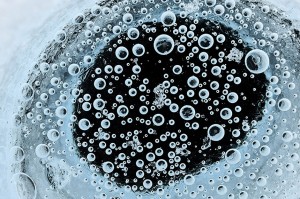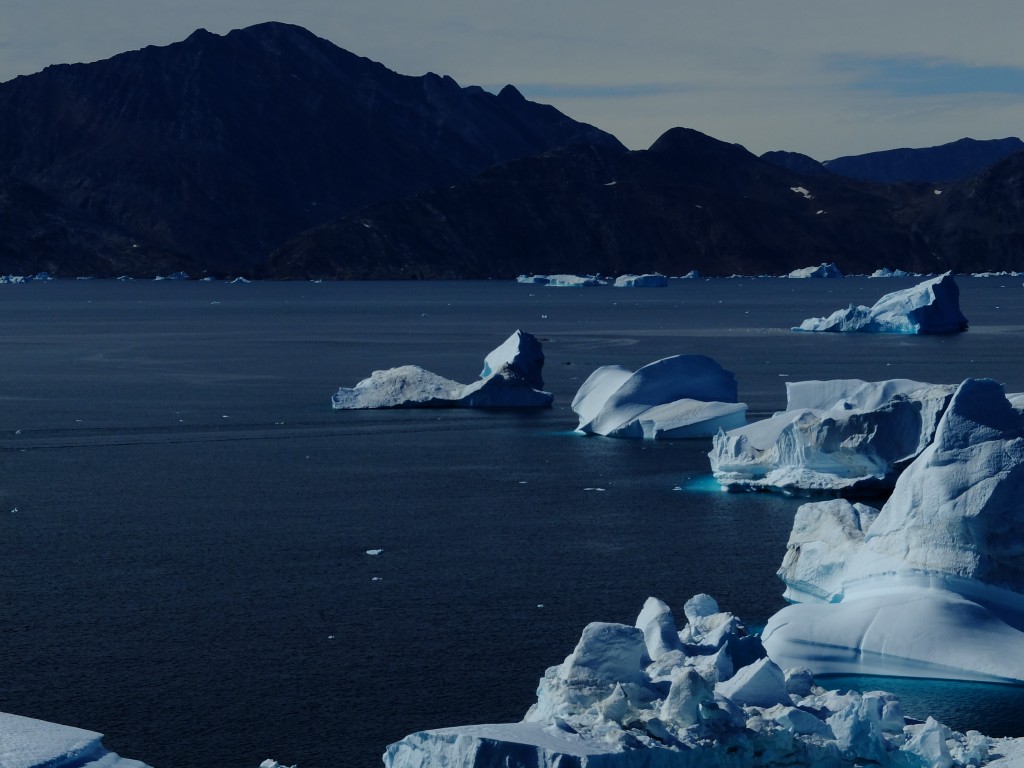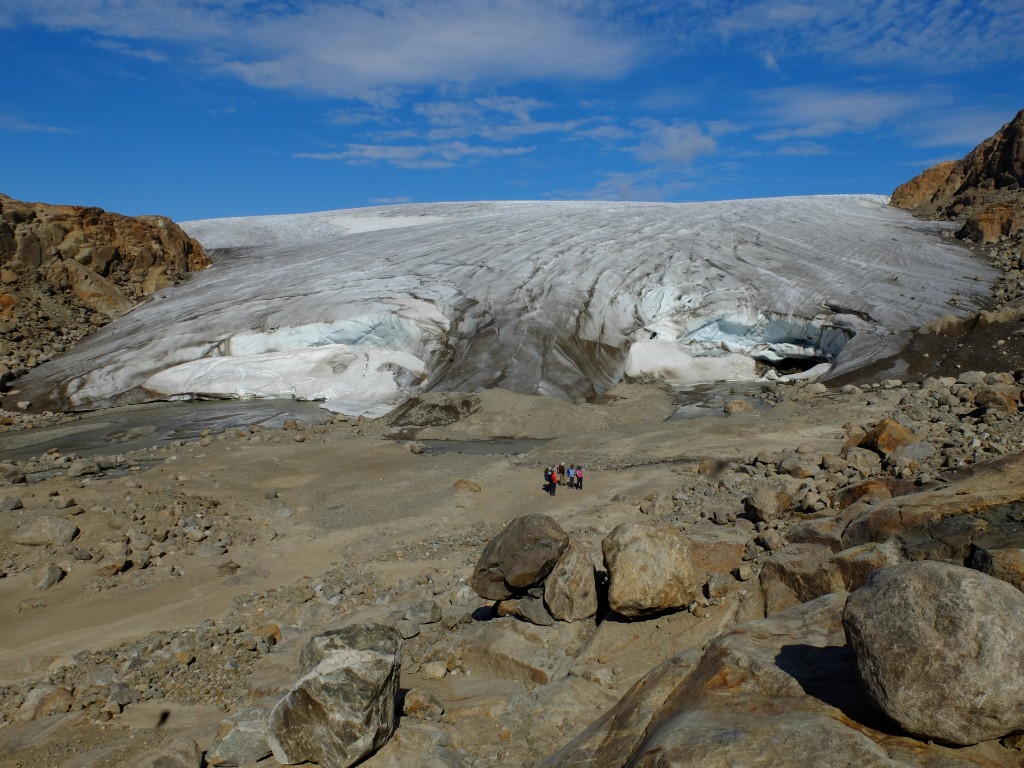After going to Greenland this past August, I had even more questions after seeing Chasing Ice the second time around than I did the first time I saw it. This past week Jim Balog visted Dickinson College to receive the Rose-Walters Prize for Global Environmental Activism and many of us had multiple opportunities to interact with him. What I find most interesting about his work is the questions of scale, which he raises for us. Even after having seen the Greenland ice sheet, I have a hard time visualizing the scale of the ice Balog is photographing.

The photo (right) of black dots in ice exemplifies this idea for me. Take a look at it and think to your self: how big are those dots? Once you think you have an idea, click here to explore the Dark Snow project and see some pictures that have those same style of features in them with scales. (Hint: those a very small features, on the order of centimeters).
Even after going to Greenland it is still hard to imagine how massive these glacial features really are. Balog does a nice job of helping his audience visualize this with comparisons to lower Manhattan, the empire state building and the capitol building, yet I still don’t think most people can gain an appreciation for the enormity of the ice. I have included several pictures from my trip to Greenland below with relatively small icebergs with boats in the pictures for scale. Can you see the boats?
If you are interesting in viewing Chasing Ice, see Extreme Ice first, it is free!



Will — Your photos are incredible. I had absolutely no idea that you all were so close to the glaciers and icebergs. What a special experience. Thanks for the great link to the “Dark Snow Project” — Balog mentioned this during his talk but I had completely forgotten about it. It is so good to see this come up again. We should explore the glaciers in Peru!
I agree wholeheartedly that one of the important issues is scale! This is always a problem with geosciences as many of the processes we study happen relatively slowly, with a few exceptions (like present day ice breakup and of course volcanic eruptions!!). Balog demonstrated his awareness of this in his visit to ERSC 311 Soils, where he took the class through the analogy of compressing Earth’s history as a planet into one year – the last 2 millions years of Earth’s history then is represented by the last few seconds before mid-night on 31 December…we have known for quite some time that glaciers move, but at slow paces. The tremendous contribution Jim B has made is to show us how much those processes are now speeding up do to anthropogenic changes to the atmosphere’s chemistry. While it is exciting to see geologic processes happening at fast paces, it is especially worrisome and scary to realize that we are making changes that will take hundreds or thousands of years for nature to ‘fix’ even if we can reverse the damage in the next decade. Odds are VERY slim that, if we fix our mistakes, ice will be able to regrow at rates anywhere close to those at which it is presenting disintegrating.